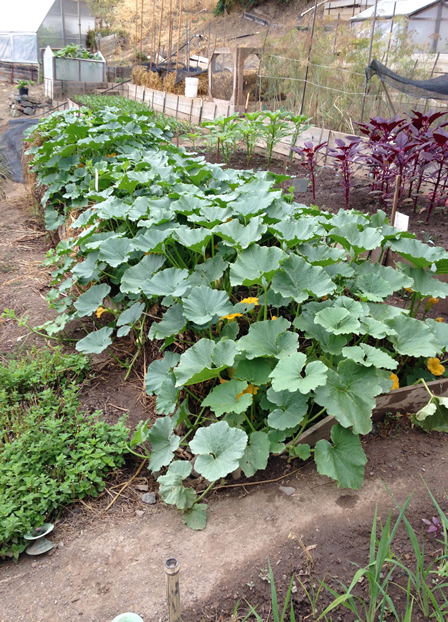Soil Fertility
The Soil Protocol was created in 2014 by Ecology Action and ECOPOL. The Protocol is based on the current research and experience in GB organic fertilizer use by the two organizations and is a work in progress. This section is part of "Teaching Guidelines," which was written as a reference for all those who will be teaching the GB method. Each soil is unique, with its own distinctive characteristics, functions, needs, shortages, and excesses. These characteristics include the composition of its nutrients, organic matter, texture, and structure. They determine how well the soil can produce plants, store nutrients, resist their leaching and erosion, and receive and store water, among other services. All of the above makes the soil similar to any other living being: each one is unique and has its own very complex personality. Because each soil is unique, they can't all be treated in the same way. We need to learn about the soil's characteristics, by sampling and testing the soil, and then give the soil the nutrients it lacks and not the nutrients it already has in excess. This is the reason why it's important to test soil and follow the fertilizer recommendation based on the soil test results. If a soil lacks nutrients essential to plant growth it can't grow abundant crops. If a soil is deficient in a nutrient, that nutrient must be added to maximize crop yields. Nutrients must be returned to the soil as much as possible—rather than purchased fertilizers—to maintain or improve soil fertility. To further avoid nutrient loss, the farmer must also prevent wind and water erosion and excessive leaching, and must minimize the amount of crops that are sold. If soil testing and a fertilizer recommendation aren't available to the farmer, then the best strategy is to add about 3 twenty-liter buckets of finished, farm-produced compost per bed, prior to every growing season. Adding compost to the soil returns many of its nutrients without the danger of adding excessive nutrients. Compost also replenishes the soil's organic matter level, which improves the soil's structure, nutrient-holding capacity, ability to receive and store water, resistance to erosion and droughts and ability to grow healthy, abundant crops more resistant to pests and disease. In addition, soil is alive, ideally with a huge diversity of micro- and macro-organisms, all of which depend on a steady supply of available organic matter in the soil. Because these soil organisms are continually eating organic matter, the farmer must produce crops that generate compost that can be added to the soil to replenish the soil's organic matter supply. It is an ongoing cycle: feed the soil so it can feed the plants, which in turn can be composted and used to feed the soil. If you would like to receive an e-copy of the Soil Protocol in Spanish or English, send an email to contact [at] growbiointensive [dot ]org.
top | Newsletter Home | Article Index | Archive
|



